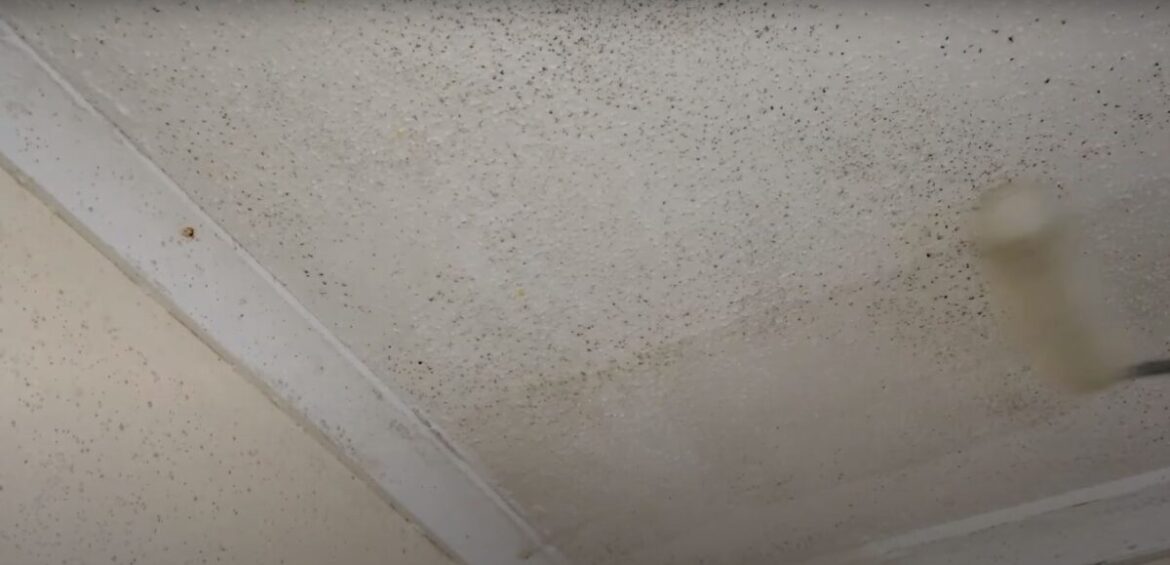Can Mold Grow on Plaster? Insight from Auckland’s Plastering Pros
Mold Growth and Plaster Explained
One of many key questions for Aucklander homeowners is, “Can mold grow on plaster?” In short, yes, mold can grow on plaster, though it’s more about the conditions rather than the plaster itself. Mold thrives in damp, dark environments, making a moist plastered wall in a poorly ventilated room a potential habitat.
Conditions That Encourage Mold Growth
Mold isn’t picky about where it sets up shop. From the trendy Ponsonby homes to the classic villas in Mt. Eden, if there’s persistent moisture, limited airflow, and organic material (like the cellulose in plaster), mold has an opportunity to grow. Key factors include:
- Humidity: The damper the air, the more conducive it is for mold.
- Temperature: Mild temperatures, especially those around 20°C, promote mold growth.
- Ventilation: Poor ventilation traps moisture, creating an ideal environment for mold.
Health and Safety Concerns with Mold on Plaster
Mold isn’t just an eyesore; it poses potential health risks. Breathing in mold spores may lead to:
- Respiratory problems
- Allergic reactions
- Headaches
- Eye, nose, and throat irritations
If you’re working on a plastering project or have spotted mold on your walls, be sure to wear protective gear like masks and gloves.
Types of Plaster and Mold Vulnerability
There are various plaster types, and each has its susceptibilities:
- Lime Plaster: Made from lime and sand, this plaster type is more mold-resistant due to its high pH.
- Gypsum Plaster: Popular and versatile, gypsum plaster is not inherently mold-resistant but can be if it remains dry.
- Cement Plaster: Used for exteriors, this plaster can resist mold due to its durability, but if cracks appear, water can seep in, creating potential mold havens.
Managing Moisture: The Key to Mold Prevention
Keeping plastered walls dry is essential, especially during Auckland’s winter months when moisture levels rise. Here are some tips:
- Ventilate: Ensure adequate airflow in rooms, especially in bathrooms and kitchens.
- Use Dehumidifiers: Helpful in reducing moisture in damp areas.
- Check for Leaks: Whether it’s a dripping pipe in Grey Lynn or a leaky roof in Remuera, address water intrusion promptly.
- Apply Mold-Resistant Paint: Seal plaster with paint designed to fend off mold.
Engaging the Right Plastering Professionals
Whether you’re in the initial stages of a home project or addressing mold on existing plaster, choosing the right professionals matters. Your Plasterers Auckland understands the unique challenges of the local climate and employs best practices to ensure long-lasting, mold-resistant plastered surfaces.
Exceptions and Considerations
While plaster can be a hospitable environment for mold under certain conditions, it’s also worth noting:
- Old Plaster: Over time, old plaster can become more porous, absorbing moisture and becoming a mold magnet.
- Finish: A polished plaster finish is less susceptible to mold compared to a rougher finish.
- Maintenance: Regularly inspecting and maintaining your plastered surfaces can stave off mold growth.
In summary, while mold can grow on plaster, with the right conditions and care, it’s entirely preventable. Understanding the intricacies of plastering and mold prevention is crucial for the health and aesthetic appeal of your home. Your Plasterers Auckland is here to ensure you get the best out of your plastering projects.
Key Takeaways
- Mold’s Perfect Home:
Mold can indeed grow on plaster, especially when the conditions involve dampness, limited airflow, and organic materials.
- Location Doesn’t Discriminate:
From Ponsonby to Mt. Eden, mold can appear anywhere there’s consistent moisture.
- Health First:
Mold is not just a visual nuisance. It can lead to serious health issues, from respiratory troubles to allergic reactions.
- Know Your Plaster:
Different plaster types, like lime, gypsum, and cement plaster, have varying susceptibilities to mold.
- Prevention is Key:
Effective ventilation, regular maintenance, using dehumidifiers, and checking for leaks are crucial steps in keeping plastered walls mold-free.
- Engage Experts:
Engaging professionals like Your Plasterers Auckland ensures that plastering projects are completed with local expertise and an understanding of mold prevention.
Frequently Asked Questions
Q: Can mold grow on any type of plaster?
A: Yes, mold can grow on various plaster types, but its likelihood depends on the plaster’s moisture content and the environmental conditions.
Q: What health risks are associated with mold on plaster?
A: Mold can lead to respiratory issues, allergic reactions, headaches, and irritations of the eyes, nose, and throat.
Q: How can I prevent mold growth on my plastered walls?
A: Ensure proper ventilation, reduce moisture with dehumidifiers, address any leaks promptly, and consider using mold-resistant paint.
Q: Are older plastered walls more susceptible to mold?
A: Yes, older plaster can become more porous over time, absorbing moisture more readily and potentially becoming a mold magnet.
Q: Does a polished plaster finish resist mold better than a rough finish?
A: Generally, a polished plaster finish is less susceptible to mold as it provides a less porous surface compared to a rough finish.
References
New Zealand Building Code: It covers requirements related to dampness, ventilation, and interior finish which can all play a role in mold growth.
“The Biology of Moulds” by A.D. Hocking & J.I. Pitt. This book gives an in-depth overview of mold biology which can provide insight into its growth on surfaces like plaster.
New Zealand Medical Journal: Search for articles related to health implications of mold exposure in New Zealand homes.
BRANZ (Building Research Association New Zealand): They produce a lot of research relevant to building standards and conditions in New Zealand. You may find studies or guidelines about mold growth in New Zealand homes.
“Practical Building Conservation: Earth, Brick, and Terracotta” by Historic England. This could provide a broader context about plaster and its vulnerabilities.
“Mould Prevention and Collection Recovery: Guidelines for Heritage Collections” by the Australian Institute for the Conservation of Cultural Material. Though focused on collections, it provides useful info on mold prevention.
Auckland Council Website: Check for any guidelines or advisories on mold in Auckland homes, especially after seasons with high rainfall or humidity.
Local News Websites: Websites like “Stuff” or “The New Zealand Herald” might have articles on mold problems in Auckland homes or areas, especially after particularly wet seasons.
“Building a Healthy Home: A Guide to Preventing and Dealing with Mold“ – This could be a local publication or a more general one, but would be a potential reference for homeowners.
University of Auckland’s Faculty of Medical and Health Sciences: Look for research studies or articles focused on the health impacts of mold exposure in New Zealand.

